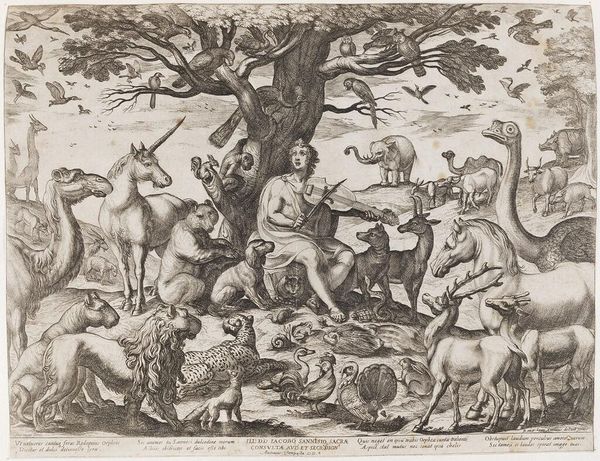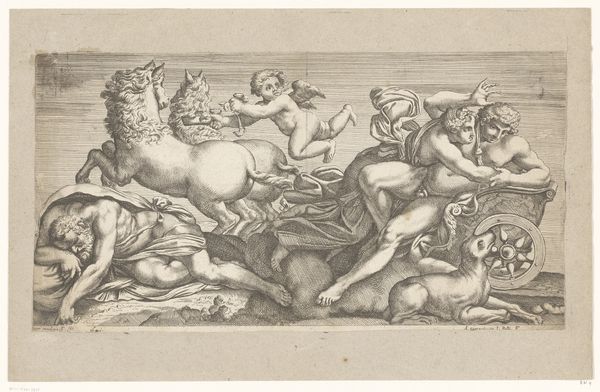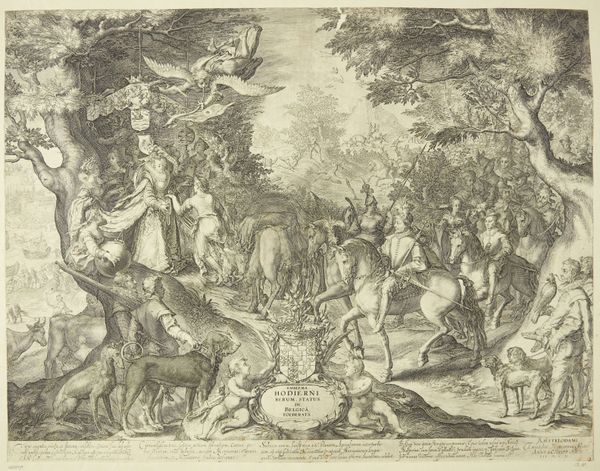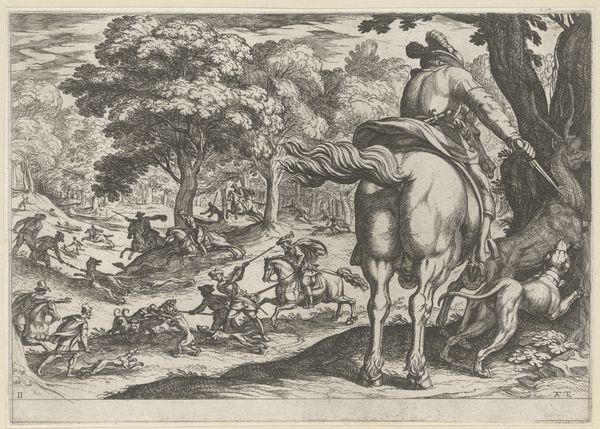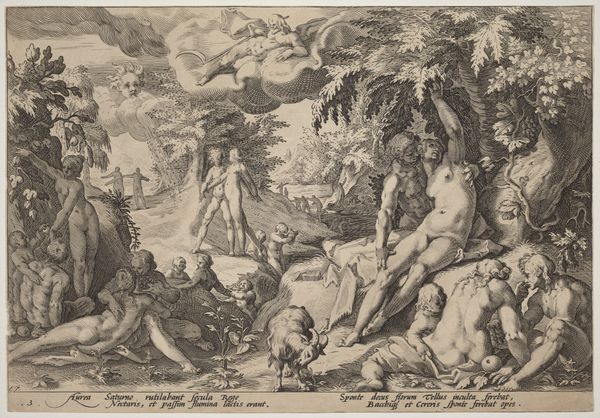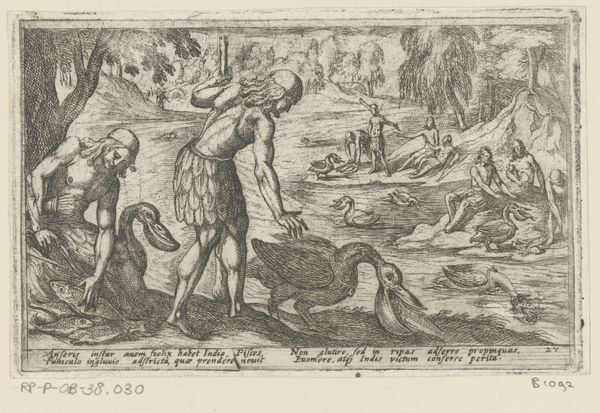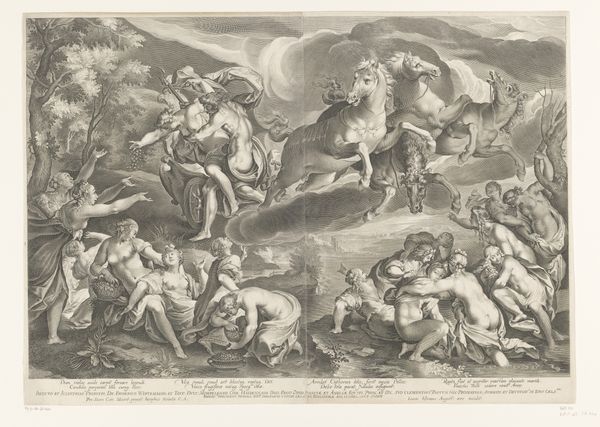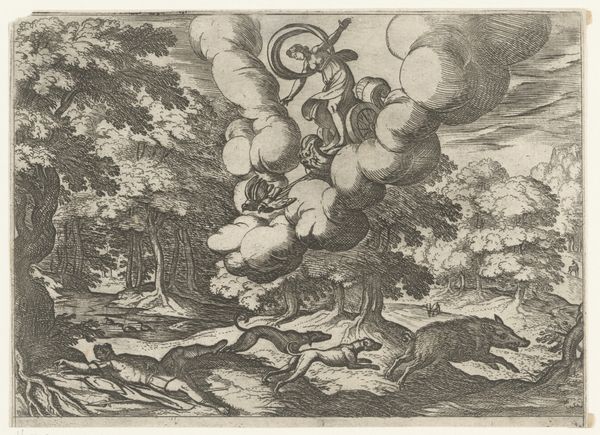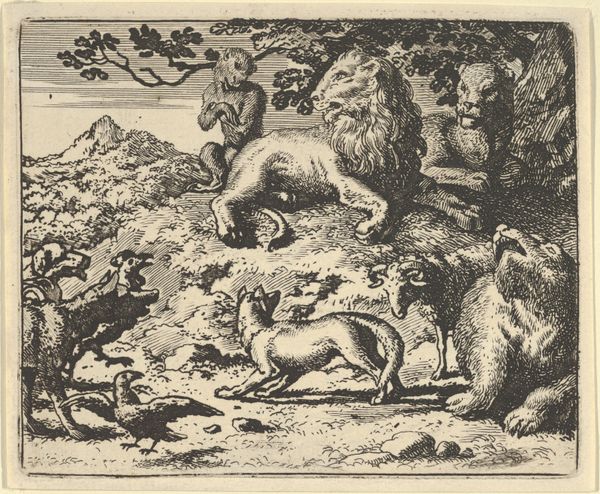
drawing, ink, engraving
#
drawing
#
allegory
#
pen drawing
#
animal
#
landscape
#
mannerism
#
figuration
#
ink
#
engraving
Dimensions: height 324 mm, width 436 mm
Copyright: Rijks Museum: Open Domain
Curator: Before us is a detailed drawing, likely from the late 16th or early 17th century. It's titled "Orpheus betovert de dieren met zijn muziek"—"Orpheus Charming the Animals with his Music"— attributed to Antonio Tempesta, and rendered with pen and ink. Editor: The composition feels so busy, teeming with life yet somehow airless. The stark, almost etched quality of the ink creates this very high contrast that emphasizes the texture…it almost vibrates. Curator: Let's unpack that density. Tempesta's focus here lies in the variety and disposition of forms. Consider the groupings: the repetition of curved lines in the animals’ bodies, the way he balances light and shadow. It’s Mannerist in its artificiality, pushing beyond naturalistic representation. Editor: For me, Orpheus as a figure stands as a symbol of harmony, civilization's influence on the wild, untamed world. Every animal present has a distinct symbolic history, and the sheer number speaks to the comprehensive, universal reach of Orpheus’s music. You see everything here from unicorns to lions all existing peacefully, in community. Curator: An allegory then. Interesting how the arrangement and details contribute to that allegorical reading. For instance, the way the tree dominates the composition. Not just as a backdrop, but structuring the space by defining zones for the animals. Editor: Exactly. Trees throughout different cultures represent growth, family, connection to both the earth and the heavens… the animals resting underneath find a sort of sanctuary. His music does not discriminate. It speaks to all creatures. Curator: The density invites prolonged viewing, encouraging one to navigate the pictorial space carefully. One has to work to resolve figure and ground.. Editor: I see the whole piece now as a hopeful vision, one of finding commonality, a reminder of beauty's power to unite. Even disparate souls can come together with the right song. Curator: I’d agree that Orpheus here invites one to dwell, meditate even, on the interconnectedness of form and meaning, while it is busy it still invites thoughtful composition. Editor: It makes me think about the simple power of song and beauty. Even amidst what feels chaotic about our world today, something as simple as an orchestra can foster incredible connection and change.
Comments
No comments
Be the first to comment and join the conversation on the ultimate creative platform.
